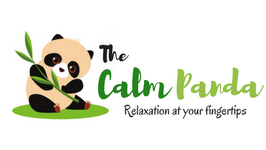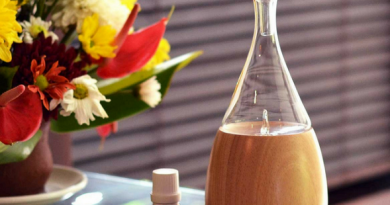How Long Should You Diffuse Essential Oils? The Answer, Plus Safety Tips You Should Know
A few decades ago, if you ask a stranger about essential oils, you would probably get a blank stare.
Since then, more people have learned to embrace aromatherapy.
Essential oils are no longer confined to spas or massage clinics.
In fact, there’s a growing evidence that diffusing essential oils can help manage insomnia, improve concentration, get rid of germs, and even relieve nausea among cancer patients on chemotherapy.
However, as more people buy essential oils and diffusers for home use, there also arise increasing questions on how to properly use them.
If you’re a beginner, perhaps you’re also wondering how long should you diffuse essential oils and whether diffusing is safe for your family in the first place.
In this quick guide, we’ll try to find the best answers to these questions so you can enjoy the wonderful benefits of aromatherapy, worry-free.
Are essential oils safe to inhale?
According to the American College of Healthcare Sciences (ACHS), inhalation is the safest and fastest way to introduce essential oils into the body.
The statement is a little bit vague because there are two types of inhalation:
- Direct inhalation where you use an inhaler made by putting the essential oil on top of hot water.
- Indirect inhalation or the use of a diffuser to disperse the essential oils into the air.
While indirect inhalation is considered safe for everyone, direct inhalation should be avoided for children under 5 years old.
Even if you’re using a diffuser, you also have to adjust the dilution ratio for the sake of the kids, who have an immature respiratory system and more sensitive skin.
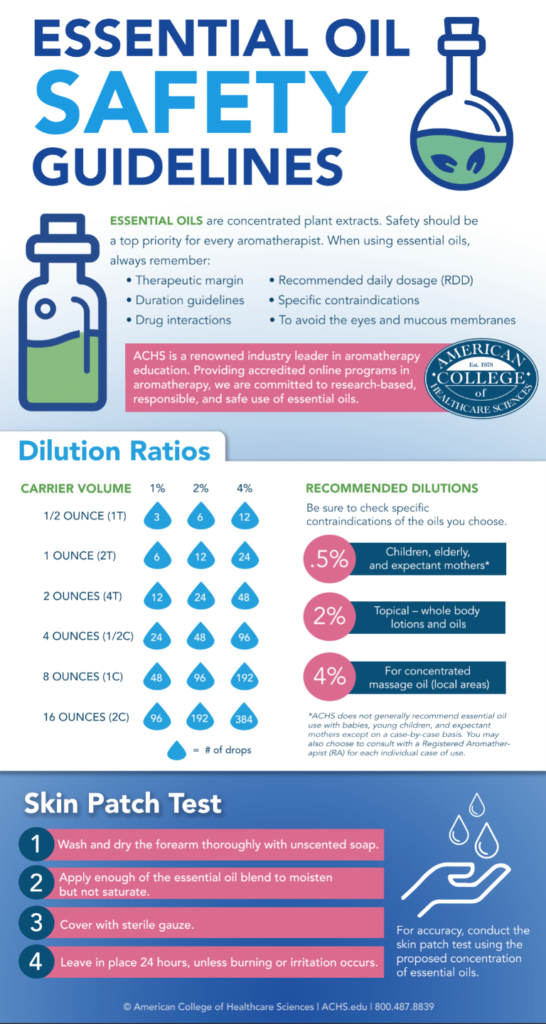
For example, if you normally use a 2% dilution (essential oil to carrier oil) ratio, only half of it (1%) is safe to diffuse inside your child’s room.
Make sure that you put the essential oil diffuser in a well-ventilated space so the microparticles can circulate effectively.
As for your pets, the ASPCA Animal Poison Control has this warning:
“Cats are especially sensitive to essential oils, and effects such as gastrointestinal upset, central nervous system depression and even liver damage could occur if ingested in significant quantities.
Inhalation of the oils could lead to aspiration pneumonia. There are significant variations in toxicity among specific oils. Based on this, we would not recommend using essential oils in areas where your pets have access, unless pets are supervised or the use of the oil is approved by your veterinarian.”
As stated above, skin application of essential oil is more dangerous for pets than inhalation. Unless your canine or feline companion has respiratory issues like asthma, inhalation of essential oils shouldn’t be that much of a concern.
However, if your pet is showing symptoms like drooling, coughing, sneezing, and vomiting when exposed to diffused essential oils, please shut off the device and take your pet to the veterinary.
The following essential oils have been found to be dangerous or toxic when diffused near pets:
- Tea tree
- Citrus
- Wintergreen
- Pennyroyal
- Pine
- Cinnamon
- Eucalyptus
Whether or not the animal has an existing respiratory condition, don’t let the essential oil diffuser run for a long time. More importantly, avoid exposing your pet’s food and water to the diffused essential oils.
If possible, keep your pet in a separate room away from the essential oil diffuser.
How long can you diffuse essential oils?
Although there are a lot of factors that may affect how long you diffuse essential oils, the standard is fifteen to thirty minutes at a time if you’re in an average size room.
This is enough to fill the space with a subtle scent that can last for hours. You may turn the diffuser on two or three times a day should you want the scent to last longer.
If you’ll be diffusing essential oils in open or large spaces like spas, stores, offices, or houses with an open floor plan, permanent diffusion may be necessary. In this case, you need an ultrasonic diffuser (more on this later) with large water capacity so it can continuously diffuse essential oils.
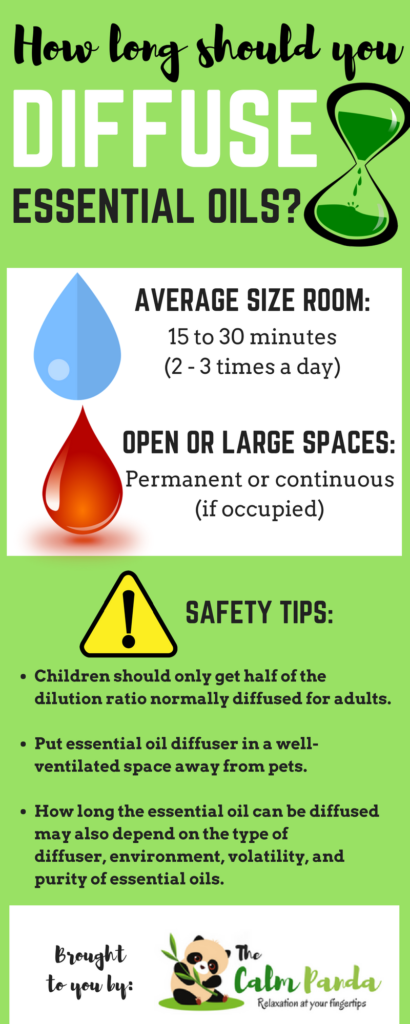
As long as your room is well-ventilated, it’s safe to leave your diffuser on all night. Just make sure you buy diffusers with timer settings in case you want to specify how long you prefer it to run.
In the end, the duration of the diffusion largely depends on both your preference and the safety of people/animals who will be exposed to it.
The following are the different factors that may influence how long you’ll diffuse the essential oils:
Type of essential oil diffuser.
There are two types of essential oil diffuser:
Ultrasonic diffuser uses water to form a mist so the resulting scent is more subtle.
The nebulizer, on the other hand, uses an electric pump to atomize the essential oil and disperse it directly into the air. As a result, the fragrance is way stronger and very noticeable.
Since the nebulizer diffuses a more concentrated form of essential oils, it can saturate the room with a powerful scent at relatively less amount of time.
If you prefer a more subtle scent, an ultrasonic diffuser will do the job. This is the ideal choice if you’re planning to deodorize a larger room for hours on end. You can also leave this diffuser on all night without irritating your nasal cavity with an overwhelming scent.
The volatility of essential oils.
In terms of how long they stay in the air, essential oils aren’t created equal.
“Notes” refer to the odor and volatility of the essential oil. The name originated from a 19th century Frenchman who classified the essential oils according to musical scales.
This is why we now have three major categories of essential oils:
- Top notes are essential oils that are light, fresh, and very quick to evaporate. Upon diffusion, they can only stay in the air for two hours tops. Examples are eucalyptus, lemon, grapefruit, and cinnamon.
- Middle notes, which evaporate between two to four hours, make up the bulk of the blend and keep the lighter top notes in perfect harmony with the heavier, thicker base notes. Examples of essential oils in this category are juniper, cypress, and chamomile.
- Base notes are the heavier varieties whose scents can linger for hours or even days. These include sandalwood, frankincense, clove, cedarwood, and rose.
When diffusing essential oils, you have to consider what category they belong. By doing so, you can adjust the frequency of diffusion based on how quickly they evaporate.
To achieve “synergy,” you can combine essential oils from these three categories.
Although the rules may vary, the ideal blend is comprised of 15 to 25% top notes, 30 to 40% middle notes, and 45 to 55% base notes.
In addition to combining the therapeutic effects of different essential oils, the synergy can also change the volatility of the blend as a whole. For example, top notes which quickly dissipate into the air can prolong their existence when combined with base notes that are relatively less volatile.
The opposite can also be true: Base notes can shorten their lifespan a little bit when combined with less stable top and middle notes.
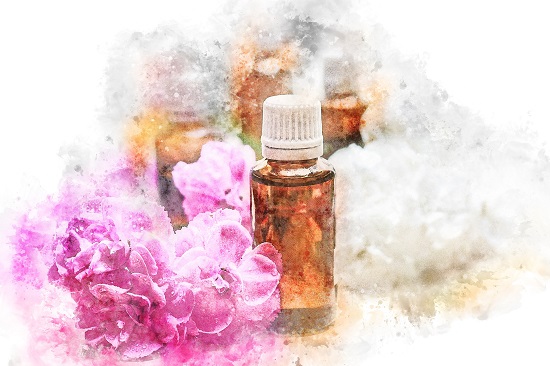
Environment.
The warmer the room is, the quicker the diffused essential oils will evaporate.
High temperature galvanizes the aromatic molecules to the point that they break free from chemical bonds and vanish into the air.
If you’re in a warm room, be prepared to drop more essential oils and use more water (for ultrasonic diffusers) to keep the quality of the aroma.
HVAC system also has the same effect. By helping spread the aromatic molecules, it also decreases the time that they can stay in the air.
The takeaway here is to know about the temperature and condition of the venue beforehand so you can figure out what type of diffuser you’ll use and for how long.
Purity or potency of the essential oil.
When shopping for essential oils, it’s best to always go for authentic varieties that were extracted from wild and organic plant materials.
Genuine essential oils are often concentrated so they last longer when diffused and provide a lingering scent.
To ensure you’ll get the best bang for your buck, choose only essential oils that are pure and not blended with carrier oils.
Room size.
Like what I’ve mentioned earlier, the size of the room also dictates how long you will diffuse the essential oils.
Regular rooms may only require fifteen to thirty minutes of diffusion which you can repeat for two to three times throughout the day.
On the other hand, the more spacious rooms including offices, markets, spas, and houses with open floor plans require continuous or permanent diffusion. This is assuming that they are occupied.
Otherwise, you can just turn the essential oil diffuser off whenever it’s empty.
Wrapping Up.
Knowing how long you can safely diffuse essential oils is just the beginning.
You also have to be aware of other people’s sensitivity towards a certain smell. Remember, just because you find lemon invigorating doesn’t mean it works the same way for your family members or co-workers.
Therefore, before diffusing any essential oil in any setting, allow others to smell the aroma first. This way, you can create a perfect blend that suits all people who will be able to smell it.
Wondering what type of essential oil diffuser is right for you? Check out our latest guide where we reviewed the best diffusers on the market right now.
